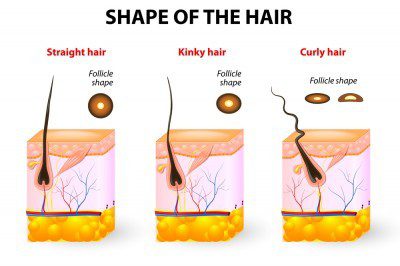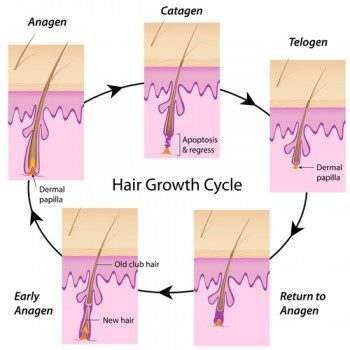Laser Hair Removal for Different Skin and Hair Types
Removing unwanted hair is an important step in any beauty regimen. Many men and women find constant shaving and waxing tedious and time consuming. While laser hair removal is often a simple process, it can be a challenge for those with certain skin types.
How Laser Hair Removal Works
Laser removal works by targeting and destroying the hair follicle with a high intensity beam that permanently removes the hair while saving the surrounding tissue. Laser hair removal usually reduces the number of body hairs in the treated area, but some people may experience re-growth.
Laser Hair Removal for Fair Skin and Blonde Hair
The laser’s heat source is attracted to pigment, like that found in darker hair. Blonde hair does not have enough pigment to attract the laser’s heat, making traditional laser hair removal for pale skin unreliable on blonde or even gray hair.
There are specially developed lasers that have proven effective in removing unwanted hair for fair skinned and blonde haired men and women. The Alexandrite Laser works at a higher intensity than traditional lasers, blasting you with the pigment you need to enjoy permanent hair reduction and removal.
Laser Hair Removal for Brown Skin
Laser hair removal for dark/black skin can be even more of a challenge than for those with pale skin. The problem with treating darker skin tones is that the laser has a hard time differentiating the skin from the hair, since the hair and skin color are often the same. Laser hair removal for black hair works best when the skin is a contrasting, lighter color.
One of the major problems that occurs with laser hair removal for brown skin is discoloration. The laser beam can actually kill the surrounding skin tissue instead of the hair, causing permanent scarring and discoloration of the skin.
However, there is a solution for dark skinned patients who want to enjoy laser hair removal. The Nd:Yag laser is effective in patients with darker skin and reduces the chances of scarring, burns and discoloration.
Laser Hair Removal for Olive Skin
Olive skin and dark hair or light skin and dark hair combinations are most effective when it comes to laser hair removal. Because there is a dramatic distinction between the hair and skin colors, the laser has no problem identifying the hair follicle and effectively attacking it.
Types of Hair on the Body
There are two types of hairs present on the body, terminal and vellus. Vellus hair is fine, downy and short and covers most of the body. It covers the entire surface of the body except for the palms of the hands and bottoms of the feet. Vellus hair is practically invisible and most people don’t notice it.
In contrast, terminal hair is thick, heavily pigmented and visible. This hair is usually the target of patients seeking laser hair removal and is often found in the pubic, underarm and leg areas.
Hair Growth Cycles
Because hair grows in cycles, it is often necessary to undergo several treatments to totally remove the hair. The three distinct stages of growth are anagen, or active, catagen, or regression and telogen, or resting. During the active phase, the hair is actively growing, and new hair follicles are constantly being added. During the catagen phase, hair follicles are dying and growth has slowed. During the telogen phase, the hair has reached its peak and is no longer growing.
Hairs in the leg, bikini area and underarms are in the active phase for about 4-6 weeks, at which point they enter the mature phase. Since not all hairs will be in the same phase at the same time, laser treatments must be spread out over a period of six weeks or more.
The Fitzpatrick Scale
One of the major concerns in laser treatment is the skin’s reaction to ultraviolet light. Developed by a Harvard-trained dermatologist, the Fitzpatrick Scale is a classification of skin types and their reactions to UV light. This helps clinicians determine the likelihood of burns and scarring during laser hair removal treatments. The scale measures as follows:
- Skin Type 1: Light or Freckled: Never Tans/Always Burns
- Skin Type 2: White: Sometimes Tans/Usually Burns
- Skin Type 3:Olive: Always Tans/Sometimes Burns
- Skin Type 4:Brown: Rarely Burns/Rarely Tans
- Skin Type 5:Dark Brown: Very Rarely Burns/Very Rarely Tans
This scale is important in determining the intensity of laser used in the process. Brown and dark brown skin, such as the type that is found in Mediterranean, African American and Indian populations, can be permanently damaged and scarred if the wrong laser is used.
Patients with white or light skin can also experience damage if the wrong laser is used. A low intensity laser can stimulate hair growth, while one with too high a setting can burn the skin.
Hair Removal Time Frames
Permanent hair removal takes several sessions to completely remove unwanted hair. Due to changing hair cycles and the thickness of the follicle, it can take a while to see permanent results. The first three treatments are usually done in intervals of 4-6 weeks. Most people will start to see improvement within the first six months of treatment.
Hair Removal by Hair Type
There are various hair types, and the type of hair you have will largely determine the effectiveness of your treatment. Laser hair removal for thick hair is often the most effective, as it is easier for the laser to target the melanin in the hair and destroy the follicle. Laser hair removal for fine hair is not as effective, although there are techniques available that will allow even those with fine, light-colored hair to enjoy the benefits of laser hair removal.
Special Medical Considerations
There are several medical conditions that often encourage excessive hair growth. People who suffer from these conditions often benefit from procedures that will permanently rid the body of unwanted hair. Polycystic ovarian syndrome, or PCOS, is a condition that causes the body to release more androgens than normal, resulting in increased body hair.
Other conditions like cancer of the adrenal glands and ovaries can cause excessive hair growth. Laser treatment has been proven effective in treating these conditions and removing hair permanently.
Electrolysis vs. Laser Hair Removal
Many people confuse electrolysis with laser hair removal. There are several key differences when it comes to both of these methods. The main difference is in the treatment itself.
Laser hair is the newer of the two techniques and involves the use of a high-beam handheld laser light that destroys the hair follicle permanently. This process is relatively painless. Most clinicians can complete the process in 20 minutes or less.
Electrolysis is an older technique which uses a slightly different method for destroying hair. The dermatologist inserts a thin probe into the hair follicle, sending an electrical shock into the root. This shock permanently kills the root, follicle and reproductive system of the hair.
Benefits and Drawbacks of Laser Hair Removal
Quick and Painless – Because of the ability to cover a large area of treatment with a few passes of the light, laser removal is often quick. Treating the bikini area, for example, often takes less than 15 minutes. The discomfort for this procedure is mild and is over quickly.
Accessibility – Laser treatment centers are everywhere. They are easy to find and you can usually get an appointment quickly.
Drawbacks
Costly – Most laser treatments can cost up to $200 per treatment. Because most areas require patients to undergo multiple treatments, these costs can quickly add up.
Temporary – While laser treatments reduce hair growth by up to 90%, they are not completely permanent. Most people have to come back for touch ups several times a year.
Benefits and Drawbacks of Electrolysis
Permanent – Because electrolysis destroys not only the follicle but also the root and the reproductive system, it is 100% permanent if performed correctly.
Cost Effective – Like laser treatment, it often takes multiple visits to get results from electrolysis. The costs, however, are less in the long run when you consider that the treatment is permanent. Once the hair is gone, you never have to pay for follow up treatment.
Drawbacks
Limited Availability – As the popularity of laser hair treatment has grown, the need for qualified electrologists has declined. It can often be a challenge to find a qualified clinician that can perform the procedure.
Time – Unlike laser treatments, electrolysis is a long process. Each hair is targeted individually, and it can take three times as long to treat the same area when comparing treatments side by side. Most of the time, visits will be limited to one hour.
Discomfort – While the pain of electrolysis is not unbearable, there is a small electrical current involved that can cause temporary discomfort. The pain is often described as similar to that of waxing.
Costs of Laser Hair Removal Treatment
There are several factors that will determine the exact cost of your laser hair treatment. Examining all of these factors will give you a general idea of how much your treatment will ultimately cost.
Treatment Area
In general, the larger the treatment area, the more it will cost to have it treated. Removing hair from the legs will probably be more costly than removing it from the upper lip area for example. Some areas require more precise treatment and will cost more. The bikini area is an exact science and treating it will likely cost more than the underarms, for example.
Hair Density and Thickness
The thicker the hair, the more difficult it will be to remove. Men’s hair, in general, is thicker than women’s, while older adults typically have thinner hair than their younger counterparts. Removing sideburns would likely be more costly than removing arm hair, for example.
Number of Treatments
It is difficult to predict exactly how many treatments it will require to remove all of your body hair, but most people will require about six treatments for successful removal. Some will require as many as 8-10 treatments. Follow up removal treatments will also factor into the price, as you will need to have the area touched up every six months.
Geographical location
The overall cost of your procedure can vary based on your geographical location. Areas like New York, Miami and Los Angeles where there are an abundance of laser treatment spas are often less expensive than cities where there are fewer locations.
Removing unwanted body hair is key to looking and feeling your best. Laser hair removal is more effective than daily shaving and waxing.






